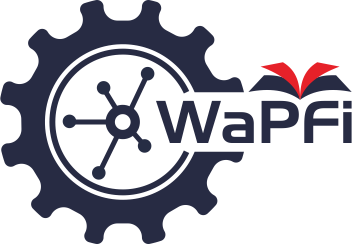Pengolahan limbah ampas teh, cangkang telur dan styrofoam sebagai adsorben untuk meningkatkan kualitas limbah laundry (air deterjen)
Abstract
Waste from the laundry process contains high concentrations of various chemicals, such as phosphate, surfactants, ammonia, methylene blue, nitrogen, as well as high levels of dissolved solids, turbidity, high BOD, and high COD. In the treatment of wastewater, one of the methods used is adsorption, and natural materials are often used as adsorbents. The commonly used material as an adsorbent is activated carbon. This study aims to determine the influence and effectiveness of three waste materials, namely tea waste, eggshells, and styrofoam as adsorbents to improve the quality of laundry wastewater. The research method used is literature review. Data collection was carried out by reviewing various journals and articles related to the three waste materials used as adsorbents in laundry wastewater containing hazardous chemical compounds. The articles and journals used were obtained from Google Scholar and several journal websites published in the last 10 years. Based on the results of this study, it was found that the most effective material used as an adsorbent for laundry wastewater is eggshells, followed by tea waste. This is proven by the porous structure of chicken eggshells which have high calcium carbonate nutrition and the physical properties of tea waste which have a wide surface area and fast adsorption kinetics.
Downloads
References
Agustina, T. E., Luigi, C.,& Lorenza, T., (2015). Pengaruh ketinggian unggun zeolit serta suhu aktivasi zeolit terhadap penurunan kandungan fosfat dalam air limbah laundry sintetik. Jurnal Teknik Kimia No.1, Vol. 21 : Universitas Sriwijaya.
Ayu, S. P., & Taufik, M. (2021). Efektivitas Waste Tea Leaves (Camellia Sinensis) Sebagai Bio Adsorben Penyerap Logam Fe dan Pb di Sungai Musi Palembang. KINETIKA, 12(1), 60-65.
Fernianti, D., dan Suryati, L. (2017). Terhadap Proses Penyerapan Surfaktan dalam Ampas Teh, 2(2), 10–14.
Kosim, M. E., Siskayanti, R., Prambudi, D., & Rusanti, W. D. (2022). Perbandingan Kapasitas Adsorpsi Karbon Aktif Dari Kulit Singkong Dengan Karbon Aktif Komersil Terhadap Logam Tembaga Dalam Limbah Cair Elektroplating. Jurnal Redoks, 7(1), 36-47.
Leswana, N. F., Siswanta, D., & Suratman, A. (2021). Synthesis Polyelectrolyte Complex Membrane Polystyrene Sufonate-Chitosan from Styrofoam Waste as The Adsorbent for Cu (II) and Ni (II) Metal. Jurnal Farmasi Etam (JFE), 1(1), 10-25.
Li, H., Li, Y., Yan, F., & Yin, X. (2021). Adsorption of nitrogen and phosporous in water by eggshell modifed with FeCl2. E 3S Web of Conferences 249, 03081, 3–6. https://doi.org/https://doi.org/10.1051/e3sconf/202124503081.
Mulyati, B. (2018). CHEESA: Chemical Engineering Research Articles. Chem. Eng. Res. Artic, 1(1), 21–25.
Fasihah, N. S., Maryani, Y., & Heriyanto, H. (2022). Pengolahan Air Limbah Laundry Menggunakan Adsorbsi Cangkang Telur Ayam. Jurnal Ilmiah Wahana Pendidikan, 8(20), 129-139.
Nadeak, S., Hasibuan, J. M., Naibaho, L. W., & Sinaga, M. S. (2019). Pemanfaatan Limbah Cangkang Telur Ayam sebagai Adsorben pada Pemurnian Gliserol dengan Metode Asidifikasi dan Adsorpsi. Jurnal Teknik Kimia USU, 8(1), 25– 31.
Nora, M., Bhagaskara, A., Agustisari, V., Lim, A., Alfalah, H. R., & Siswanta, D. (2023). Fabrication of Polystyrene Sulfonate-Chitosan (PSS-Chitosan) Membrane as Dodecyl Benzene Sulfonate (DBS) Adsorbent in Laundry Wastewater. Jurnal Kimia Sains dan Aplikasi, 26(1), 19-27.
Nurmayanti, Y., Poba, D., & Marpaung, M. E. (2022). Adsorption of Fe (III) Ion in Tablets Fe Supplement by Black Tea Dregs and its Application in Inorganic Chemistry Learning. Jurnal Akademika Kimia, 11(3), 197-201.
Pilendia, D. (2020). Pemanfaatan adobe flash sebagai dasar pengembangan bahan ajar fisika : studi literatur. Jurnal Tunas Pendidikan, 2(2), 1-10. https://doi.org/10.52060/pgsd.v2i2.255
Pratiwi, I. Y. (2023). Pengolahan Limbah Batik Menggunakan Gabungan Proses Adsorpsi Karbon Aktif dan Biokoagulasi Biji Asam Jawa (Tamarindus Indica) dan Biji Durian (Durio Zibethinus) (Doctoral dissertation, Universitas Islam Indonesia).
Purwaningsih, D. Y., Wulandari, I. A., & Aditya, A. W. (2021, March). Pemanfaatan Cangkang Telur Ayam Sebagai Biosorben untuk Penurunan COD pada Limbah Cair Pabrik Batik. In Prosiding SENASTITAN: Seminar Nasional Teknologi Industri Berkelanjutan (Vol. 1, No. 1, pp. 507-512).
Rapang, S. T., Devy, S. D., Nugroho, W., Hasan, H., Oktaviani, R., & Trides, Tommy. (2022). Penurunan kadar logam besi (fe) dan mangan (mn) pada air asam tambang menggunakan karbon aktif cangkang telur. Jurnal Chemurgy, 6(2), 58-64.
Salamah, S., Mufandi, I., Krismawati, A. A., & Humairrah, S. (2023). Kemampuan cangkang telur sebagai adsorben untuk meningkatkan baku mutu air limbah laundry (air deterjen). Jurnal Teknik Kimia, 29(1), 47-53.
Saputro, H. D., & Dwiprigitaningtias, I. (2022). Penanganan pada Limbah Infeksius (Sampah Medis) Akibat Covid 19 untuk Kelestarian Lingkungan Hidup. Jurnal Dialektika Hukum, 4(1), 1-18.
Sari, E., Asriyani, T., & Indrawati, R. (2020). Perbedaan Kadar PO43-Pada Air Sebelum dan Setelah Penambahan Cangkang Telur Ayam. Jurnal Laboratorium Khatulistiwa, 3(2), 30-33.
Ulwi, P. F., Apriani, M., & Cahyono, L. (2022). Ukuran Partikel Adsorben Ampas Teh dan Waktu Operasional terhadap Penurunan Konsentrasi COD dan Fosfat Limbah Laundry. In Conference Proceeding on Waste Treatment Technology (Vol. 5, No. 1).
Widayatno, T., Yuliawati, T., & Susilo, A. A. (2017). Adsorpsi Logam Berat (Pb) dari Limbah Cair dengan Adsorben Arang Bambu Aktif. Jurnal Teknologi Bahan Alam, 1(1), 17-23.
Wijaya, I. K., Yulia, Y. F., & Udyani, K. (2020). Pemanfaatan Daun Teh Sebagai Bisorben Logam Berat dalam Air Limbah (Review). Envirotek: Jurnal Ilmiah Teknik Lingkungan, 12(2), 25-33.






